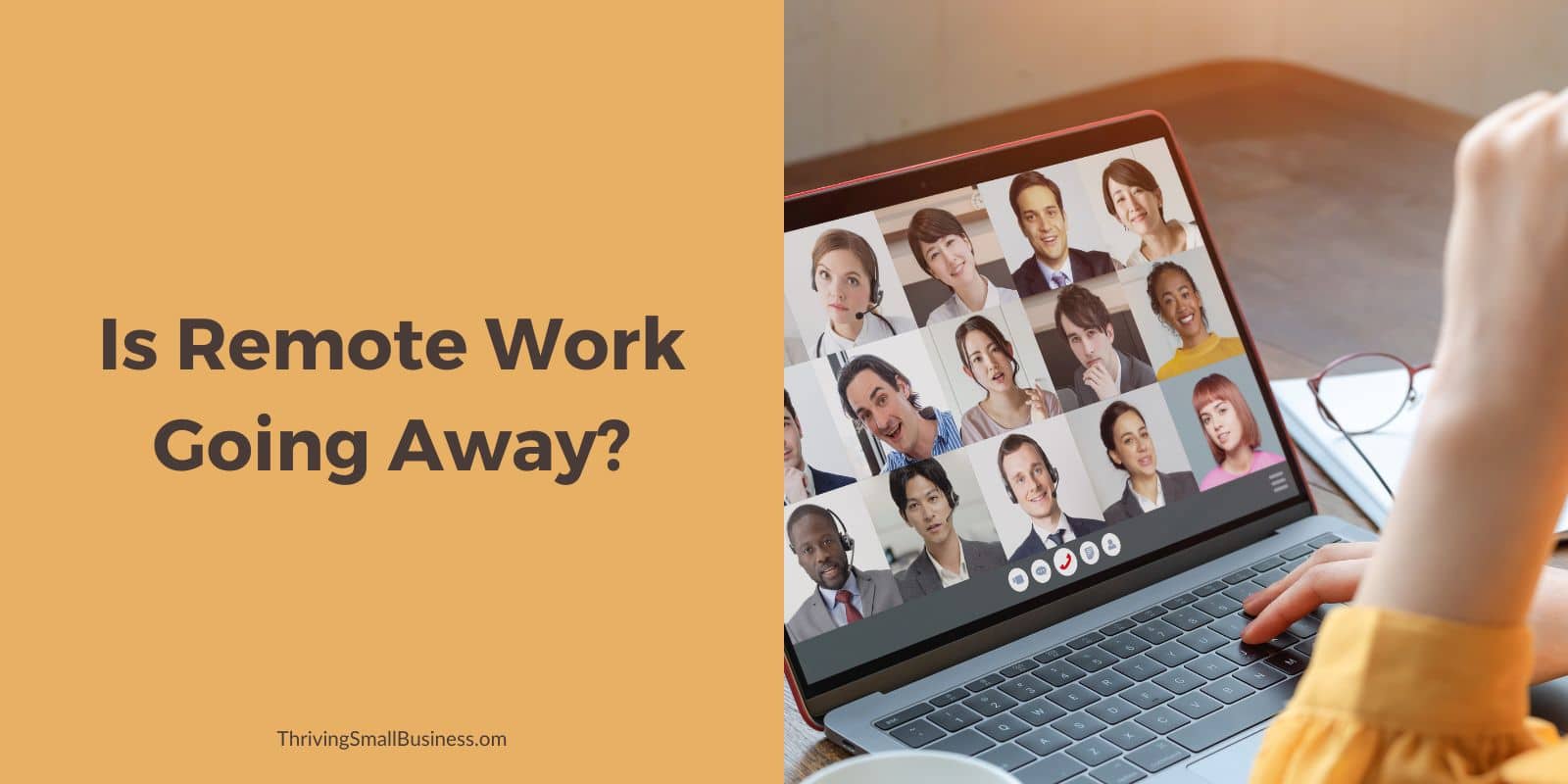Is Remote Work Going Away?
Estimated reading time: 5 minutes
Remote work exploded during the COVID-19 pandemic.
Out of a necessity to keep employees safe during an unprecedented time, employers did everything they could to help employees work from home.
This included modifying the employee’s home work areas, purchasing equipment, and using technology to encourage connectivity and increase productivity.
Most employees were thrilled to have the freedom to work in a relaxed and comfortable environment.
It did not come without challenges.
What also was going on during those years was kids were at home with working parents.
These parent employees faced the challenging task of homeschooling their children while trying to maintain productivity in their jobs.
We cannot underestimate this dual role’s toll on parents, kids, and families. It was like no time we have ever experienced.
While this temporary measure fixed the temporary problem of the pandemic, there were some downsides to the businesses these employees worked for.
Employee Training
Most employers have a structured employee orientation and training program to get new hires up to speed.
While much of this onboarding can be done on a computer, remote training lacks physical and social interaction with other employees.
For instance, it is common practice for employers to host a welcome lunch for new employees to make them feel welcome. This is difficult to do over a Zoom call.
Communication
Communication is crucial for the success of any business, particularly if communicating with coworkers is done virtually.
The risk of miscommunication, no communication, or delays in information sharing can cause workflow issues and unintended workplace conflict.
The result can be issues with collaboration and project completion.
Employee Isolation
Most employees would say that they love working at home.
However, most would also admit that there is a measure of isolation that comes with being at home instead of the office.
Anyone who works from home understands that it requires discipline to remain productive and to be accountable for job responsibilities when there is no manager looming in the background.
Employees can become lonely and isolated, impacting mental health and personal well-being.
Work Culture
A work culture is defined as “how we do things here.” This common approach to communication, interactions, and business norms can be lost when employees are spread over a wide range of geographical areas.
Building an effective work team is difficult when most communication is done through computer screens.
Face-to-face communication enhances work cultures, team dynamics, and office norms.
Supervision
Great managers take the time to spend time with employees.
They work to develop relationships with employees and seek to serve as a coach and mentor in the employee’s development.
For instance, a supervisor may not be easily available to help solve issues or monitor how work is done.
This can be much more difficult when employees are physically in a different area.
Those impromptu conversations and hallway chatter are no longer an option with remote workers, reducing the ability to foster important relationships.
Securing Company Data
Company data is often its most valued resource. When employees are in countless geographic locations, it becomes difficult to maintain a high level of security for business data.
Companies need to protect this sensitive information with enhanced cyber security and ongoing monitoring of company information that employees have access to.
Tech Support
Most offices have someone or a department that helps with computer issues.
Typically, there is a technical person who can help troubleshoot hardware or software issues. When an employee is at home, this type of tech support becomes more difficult.
Innovation
Company innovation is fostered through collaboration and creative brainstorming.
The diverse thought that comes with a team in a room bouncing ideas off each other, just isn’t the same over a Zoom call.
Innovation requires relationships that foster creativity in coworkers.
The Pandemic is Behind Us – Is Remote Work Going Away?
Employers have been slowly encouraging employees to come back to the office.
However, some employees are pushing back on this move.

Just a short time ago, employees felt like they had the upper hand because of unemployment rates.
That tide seems to be turning as significant company layoffs are happening much more frequently than it was even a few months ago.
CEOs Want to End Remote Work
CEOs are working to end this remote work season.
Most companies now require employees to come into the office at least a few days a week.
But, 63 percent of CEOs predict employees will return to the office full-time by 2026.
This will be a slow transition, but most will likely have all workers back in the office, at least part-time.
How To Prepare for Back to The Office
Consider employee challenges.
Young parents, in particular, have no doubt enjoyed cost savings in childcare, transportation costs, and wardrobe expenses.
Let employees know that you recognize these challenges and look for creative approaches to helping employees offset those costs.
For instance, consider a transition period when you can offer gift cards to offset the new work-related expenses.
Allow Ample Transition Time
No one likes surprises, so create a timeline for this transition that allows employees ample time to make personal adjustments.
Communicate expectations frequently so employees can begin to prepare for the change.
Be Prepared for Pushback
You will undoubtedly deal with at least a few employees pushing back on this expectation.
Try to be reasonable, but hold the line and don’t allow employee tantrums or threats to change your position.
All it takes is one employee to win the battle to stay at home, and you will be fighting a battle with all.
Think through an appropriate timeline and stick to it.
Host a Return Party
Most employees will enjoy reconnecting with co-workers.
Host a breakfast or luncheon to allow employees to socialize and foster those valuable work relationships.
Bring in food, plan some activities and prizes to make it a special occasion.
Some Remote Work Will Remain
Undoubtedly, there will be a continued population of employees with jobs that can be done efficiently from home.
Learn to work with this group.
However, most will likely return to the office at least a few days a week.
Organizations hope that the end of the pandemic and this transition back to the office will help improve employee engagement and increase worker productivity.






